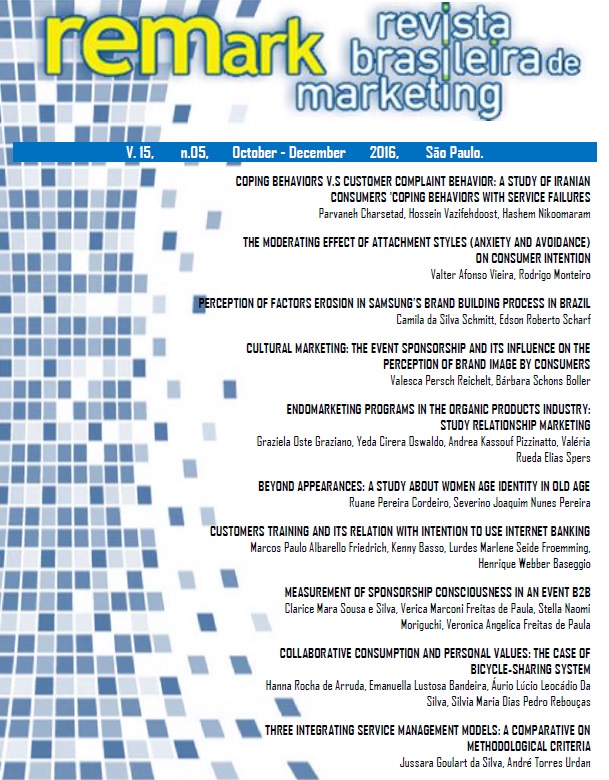Beyond Appearances: A Study about Women Age Identity in Old Age
DOI:
https://doi.org/10.5585/remark.v15i5.3344Keywords:
Consumer and Culture, Age, Old Age, Age Identity.Abstract
The Brazil has shown a large increase in the number of people in old age, in 2011 was already accounted 23.5 million individuals in this age group (IBGE, 2014). Despite these significant numbers, individuals who reach this age group are still stigmatized by society. An example of this is present in Brazilian market targeted to this audience, which mostly offers products almost solely associated with limitations of physical condition relating to age (BALLSTAEDT, 2007). However, through the meanings attributed to consumption practices can deny the social judgment on the identity of age socially constructed (BARNHART & PEÑALOZA, 2013). Therefore, this study aimed to analyze how women between 65 and 75 years old use the meanings attributed to the consumption of goods and services to build and negotiate their age identity. The field research was conducted with eleven women living in the metropolitan area of Rio de Janeiro in 2015. From the data analysis it was possible to identify that: i) the symbolic demarcation of women age identity in old age is the face of the negative stereotype associated with aging; ii) Consumption plays a central role for socializing and building a more positive old identity; and iii) the cultural significance of the body and their consumption are used by women as a way of building an age of identity in the third age.








